Filter by
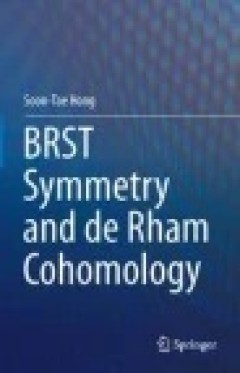
BRST Symmetry and de Rham Cohomology
This book provides an advanced introduction to extended theories of quantum field theory and algebraic topology, including Hamiltonian quantization associated with some geometrical constraints, symplectic embedding and Hamilton-Jacobi quantization and Becci-Rouet-Stora-Tyutin (BRST) symmetry, as well as de Rham cohomology. It offers a critical overview of the research in this area and unifies t…
- Edition
- -
- ISBN/ISSN
- -
- Collation
- X, 201
- Series Title
- -
- Call Number
- 539.7
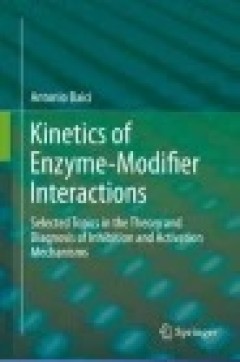
Kinetics of Enzyme-Modifier Interactions: Selected Topics in the Theory and D…
The kinetic mechanisms by which enzymes interact with inhibitors and activators, collectively called modifiers, are scrutinized and ranked taxonomically into autonomous species in a way similar to that used in the biological classification of plants and animals. The systematization of the mechanisms is based on two fundamental characters: the allosteric linkage between substrate and modifier an…
- Edition
- -
- ISBN/ISSN
- 978-3-7091-1402-5
- Collation
- -
- Series Title
- -
- Call Number
- -

Transport and Fluctuations in Granular Fluids
This brief offers a concise presentation of granular fluids from the point of view of non-equilibrium statistical physics. The emphasis is on fluctuations, which can be large in granular fluids due to the small system size (the number of grains is many orders of magnitude smaller than in molecular fluids). Firstly, readers will be introduced to the most intriguing experiments on fluidized gra…
- Edition
- 1
- ISBN/ISSN
- 978-3-319-10286-3
- Collation
- XVI, 118
- Series Title
- SpringerBriefs in Physics
- Call Number
- -

Transport Spectroscopy of Confined Fractional Quantum Hall Systems
This book provides an overview of recent developments in experiments probing the fractional quantum Hall (FQH) states of the second Landau level, especially the \nu=5/2 state. It summarizes the state-of-the-art understanding of these FQH states. It furthermore describes how the properties of the FQH states can be probed experimentally, by investigating tunneling and confinement properties. The …
- Edition
- 1
- ISBN/ISSN
- 978-3-319-21050-6
- Collation
- XIV, 308
- Series Title
- Springer Series in Solid-State Sciences
- Call Number
- -
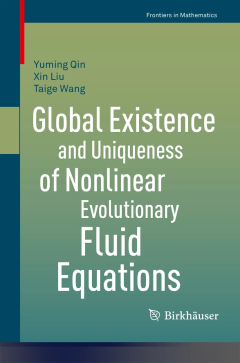
Global Existence and Uniqueness of Nonlinear Evolutionary Fluid Equations
This book presents recent results on nonlinear evolutionary fluid equations such as the compressible (radiative) magnetohydrodynamics (MHD) equations, compressible viscous micropolar fluid equations, the full non-Newtonian fluid equations and non-autonomous compressible Navier-Stokes equations. These types of partial differential equations arise in many fields of mathematics, but also in other …
- Edition
- -
- ISBN/ISSN
- 978-3-0348-0593-3
- Collation
- XI, 211
- Series Title
- -
- Call Number
- 510 QIN g
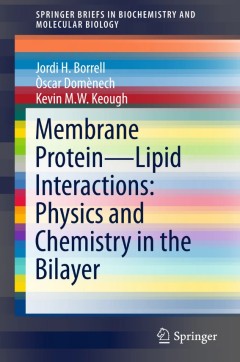
Membrane Protein – Lipid Interactions: Physics and Chemistry in the Bilayer
This book has been conceives as a brief introduction to biomembranes physical chemistry for undergraduate students of sciences, and it is particularly dedicated to the lipid-protein membrane interactions. A general introduction is presented in Chapters 1 and 2. The following Chapters, 3 and 4, describe the most accepted theories on lipid-membrane protein interactions as well as the new experime…
- Edition
- 1
- ISBN/ISSN
- 978-3-319-30275-1
- Collation
- XIV, 116
- Series Title
- Membrane Protein – Lipid Interactions: Physics and Chemistry in the Bilayer
- Call Number
- -

Global Aspects of Classical Integrable Systems
This book gives a uniquely complete description of the geometry of the energy momentum mapping of five classical integrable systems: the 2-dimensional harmonic oscillator, the geodesic flow on the 3-sphere, the Euler top, the spherical pendulum and the Lagrange top. It presents for the first time in book form a general theory of symmetry reduction which allows one to reduce the symmetries in th…
- Edition
- -
- ISBN/ISSN
- 978-3-0348-0917-7
- Collation
- XVIII, 477
- Series Title
- -
- Call Number
- 004 CUS g
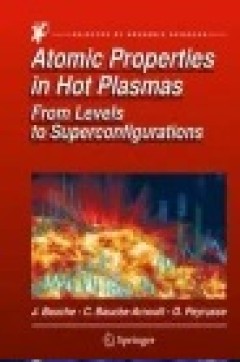
Atomic Properties in Hot Plasmas From Levels to Superconfigurations
This book is devoted to the calculation of hot-plasma properties which generally requires a huge number of atomic data. It is the first book that combines information on the details of the basic atomic physics and its application to atomic spectroscopy with the use of the relevant statistical approaches. Information like energy levels, radiative rates, collisional and radiative cross-sections, …
- Edition
- -
- ISBN/ISSN
- 978-3-319-18147-9
- Collation
- XVI, 379
- Series Title
- -
- Call Number
- 539.7

Jacobus Cornelius Kapteyn: Born Investigator of the Heavens
Jacobus C. Kapteyn (1851-1922) was a Dutch astronomer who contributed heavily to major catalogs of star positions, such as the Cape Photographic Durchmusterung and the Harvard-Groningen Durchmusterung, and arranged extensive international collaboration through his Plan of Selected Areas. He contributed to the establishment of statistical astronomy and structure and dynamics of the Sidereal Syst…
- Edition
- -
- ISBN/ISSN
- 978-3-319-10876-6
- Collation
- -
- Series Title
- -
- Call Number
- -
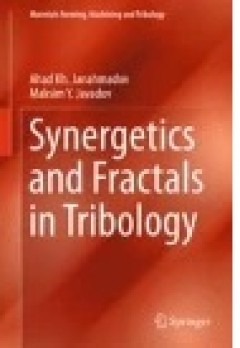
Synergetics and Fractals in Tribology
This book examines the theoretical and practical aspects of tribological process using synergy, fractal and multifractal methods, and the fractal and multifractal models of self-similar tribosystems developed on their basis. It provides a comprehensive analysis of their effectiveness, and also considers the method of flicker noise spectroscopy with detailed parameterization of surface roughness…
- Edition
- -
- ISBN/ISSN
- 978-3-319-28189-6
- Collation
- XII, 381
- Series Title
- Materials Forming, Machining and Tribology
- Call Number
- -
 Computer Science, Information & General Works
Computer Science, Information & General Works  Philosophy & Psychology
Philosophy & Psychology  Religion
Religion  Social Sciences
Social Sciences  Language
Language  Pure Science
Pure Science  Applied Sciences
Applied Sciences  Art & Recreation
Art & Recreation  Literature
Literature  History & Geography
History & Geography